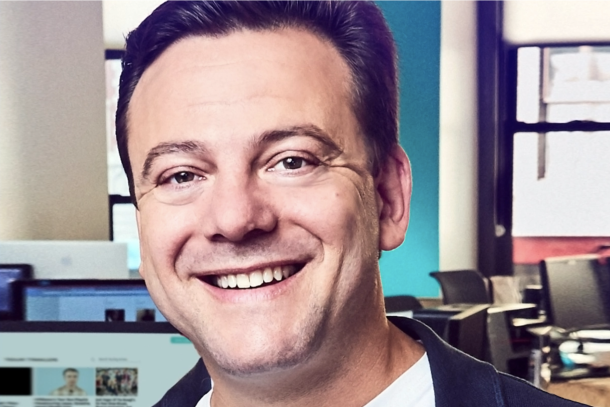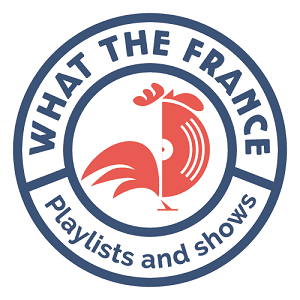At Work With Fabrice Sergent, Who Retooled Bandsintown For a World Without Tours
Bandsintown is a concert discovery app that allows music fans to keep track of artists’ tour dates. But when concerts around the globe started shutting down back in March, the company recognized it needed to change course — and fast.
Managing partners Fabrice Sergent and Julien Mitelberg put their daily projects on hold and raced to develop new tech that’d allow artists to list livestreams alongside tour dates; the 65-person team also launched a channel on Twitch and began experimenting with new ways to drive revenue for artists, such as conducting paid meet & greets over video chat. With 58 million users and more than two million events listed on its platform each year, Bandsintown believes it has twin responsibilities as both a tech company that brings users a service and as a driving force for up-and-coming artists looking to make a living, Sergent tells Rolling Stone. “Our goal is to empower emerging artists has been reached,” he says.
Bandsintown was one of the earliest companies to embrace livestreaming, even when many others were still skeptical. Can you walk us through your thinking?
We put everything on pause immediately. We felt that we had to do something for the artist — to help them not only weather the storm but also survive. We knew tours would be canceled. We changed the entire roadmap. For 2-3 weeks the entire team really focused on expanding the platform to enable artists to add livestream events within our ecosystem. We thought livestreams would at least be an opportunity for them to stay in touch with their fans instead of being entirely silent. It really started from our mission, which is to help artists.
Once we updated the platform, enabling artists to list these livestream events and send live reminders about them — that’s new because you don’t need a live reminder for a physical concert — artists started to understand the importance.
“Livestreaming is a new genre, a new form of entertainment. It is not ephemeral. People will doubt it — but I believe that it will stay and be a complementary form of entertainment that will compete with playlists and videos and live shows.”
How successful has the livestream-listing on the app been?
Step by step, since March 26th when we enabled livestreams, we’ve gotten 10,336 artists hosting 28,000 livestreams. Every day we now offer access to about 3,000 livestreams for the fans visiting the platform. Livestreams are not just artists going on air to have a conversation — they are special musical events programmed by the artist. We’ve been overwhelmed by the creativity.
I can tell you 76% of these streams are produced by artists of less than 10,000 followers. Our goal is to empower emerging artists has been reached, so that’s encouraging.
Another way to characterize success: Physical events are coming back step by step, but livestreams now represent half of the additional creation of new events in our platform. It means artists are getting it. We are now in the second phase of this exploration because the first instinct was just to stay in touch. Livestreams are complementary to what fans used to have.
What does that second phase look like?
We are testing premium meet & greets, for example. We’ve done about 10 of them, thinking that especially with COVID, it could be a way to help artists. We sell 20-30 tickets for each meet & greet. The biggest token of success is to see how fans react — and we’ve seen the emotion that is being created.
Another side of what we did: If Bandsintown is the program guide, Bandsintown Live, on Twitch, is our own network channel. We’ve been very active on it. I don’t know who else livestreamed more than 250 artists over the last 45 days. It’s a great discovery channel for fans and a great stage for artists. We just partnered with 19 artists to do a livestream festival, Fête de la Musique, on June 21st. We can see emerging artists getting 100,000 views — which is stronger than what they could get in a physical space.
I imagine that COVID has altered your internal operations as well.
One of the things paramount is the respect for teams and human beings. So, we were one of the very first companies to decide to work from home. We didn’t want to take the risk. But we’ve tried to apply in the virtual life what we’ve been doing before, which is to be transparent, hold a daily scrum, hold a weekly town hall, have one-on-ones. Our leadership team is held accountable.
So at this point, is Bandsintown more of a music company or a tech company?
Our process, our know-how — a lot of that is inherited from the tech world. But because we have been always pro-artist and respect the artist, we’ve been adopted by the music industry and artists and managers on a global basis. People in the industry know Bandsintown helps artists be discovered. We’re not trying to extract from the artist; we’re contributing. The business model of the company is to sell ad campaigns to brand advertisers that help artists benefit. They are clearly part of the platform.
How did you originally end up in this particular intersection of music and technology?
Julian, my partner, and I have always both been passionate about live music. We are serial entrepreneurs who bonded over underground electronic music in France. Artists have to be creative and entrepreneurial — I relate a lot to that fight.
It’s a criteria of recruitment for us, to hire people who at least share our mutual love of venues and understanding of how live music can impact the world. There’s hope for a better world in live music. When you spend a night in the mosh pit with people of all origins, I think, it makes you smarter. And I think technology should help society. We are very lucky that we are applying tech and data for that purpose.
We are a tech startup — well, we have 65 people, so we are beyond the startup phase. But we have the methodology of the tech world while being music fans at the core. We have some engineers who are performing musicians themselves.
What’s your biggest challenge working in this unique space?
We constantly try to improve our discovery tools. That’s the core of what we are. Getting the access to the data among hundreds of thousands of artists, talking to 50 ticketing companies worldwide, setting up livestreams, making sure artists can see the data… All this helps us build a better recommendation engine. But that’s the challenge: How do we get enough data from both the artist and the fans to help them connect to fans?
We track user behavior. Which artists are users commenting on, listening to frequently on music-streaming platforms that they link to Bandsintown, or buying multiple tickets for? We launched live music charts last year to show geo-targeted momentum of artists based on fans’ interest in their touring activity. The wealth of data was already there, available to be accessed and used to infinity — but this was the first time we revealed it. It was a bit scary, because it reveals a lot. But the data we have is so unique.
What would you say to people who say livestreaming is a COVID-only fad?
Livestreaming is a new genre, a new form of entertainment. I published an op-ed quite early to make that point pretty strongly. It is not ephemeral. People will doubt it — but I believe that it will stay and be a complementary form of entertainment that will compete with playlists and videos and live shows.
I feel that vision is opening a wide array of creative opportunities for the artist and fans. That’s what I’m trying to drum. I’d like fans to be able to come to Bandsintown as a hub for live-streaming and watch as many hours as they want from their couch. They can say ‘Hey I want to watch some music!’ and do so. It’s not only COVID. There’s something happening and we should all explore it together.


